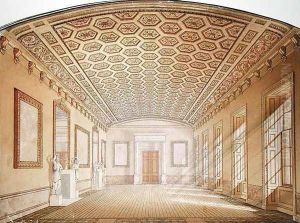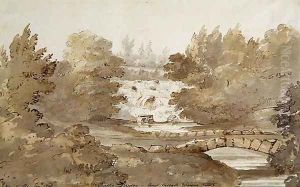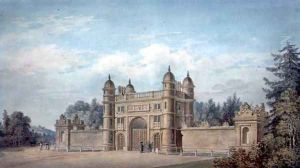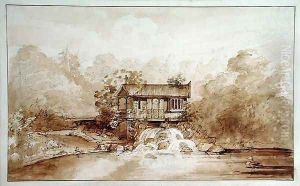Sir Jeffry Wyatville Paintings
Sir Jeffry Wyatville was a prominent English architect during the late 18th and early 19th centuries. Born on August 3, 1766, in Burton upon Trent, Staffordshire, England, he was originally named Jeffry Wyatt. He was part of the famous Wyatt family, which included several notable architects of the period, such as his uncles Samuel Wyatt and James Wyatt, who were significant figures in neoclassical architecture.
Jeffry initially trained under his uncle Samuel Wyatt as an architect but later worked extensively with his uncle James, who was the Surveyor-General and Comptroller of the King's Works. His early works were influenced by the neoclassical style, which was prevalent during that era. However, he developed his style as his career progressed, incorporating elements of the Gothic revival and picturesque aesthetics.
Wyatville's most famous work was the transformation of Windsor Castle, which he undertook for King George IV. Beginning in 1824, this project lasted for many years and was considered one of the era's most significant architectural undertakings. He redesigned the castle's exterior, added a new round tower, and created the magnificent Waterloo Chamber in honor of the British victory over Napoleon Bonaparte. His work at Windsor Castle earned him a knighthood in 1828, and he took the opportunity to change his surname to Wyatville, to distinguish himself from other members of his illustrious family.
Throughout his career, Wyatville worked on several other significant projects, including Chatsworth House, where he made extensive alterations and additions for the Duke of Devonshire. He also worked on the restoration of the medieval Warwick Castle, where he again demonstrated his adeptness at blending contemporary needs with historical accuracy and sensitivity.
Wyatville's contributions to British architecture were significant, and his works are still admired for their scale, vision, and the seamless integration of new designs with existing structures. He continued to work until his death on February 18, 1840, in London. His legacy is reflected in the many buildings he designed or altered, which remain important cultural and historical landmarks in the UK.



